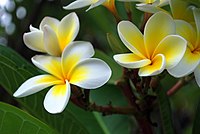I've got incense from three different suppliers in the holy city of
Vrindavan, India, and the incenses are pretty similar. It is possible they are all getting incense from either the same single producer, or - given the batch variance - from a variety of home producers in the Vrindavan area.
Vrindavan Bazaar (Hare Krsna Exports LLC, House No. 351, Chaitanya Vihar, Vrindavan);
Hare Krishna Das (Hare Krishna Emporium, Loi Bazaar, Vrindavan); and
Rasbihari Lal & Sons (Rasbihari Lal & Sons, Loi Bazar, Vrindaban). There is a fourth supplier called
Vrindavan Bazar, which has a name and logo almost exactly the same as Vrindavan Bazaar, but gives no address, and they only deliver within India.
Incense production in India can be confusing. There are a number of outlets which give the impression they are the producer when they are just the retailer. Rasbihari Lal is mainly a religious bookshop, though they do also sell incense. But I see no evidence of them being a producer. This is kind of similar to
Pushkar incense, where there are three outlets for locally produced incense, none of whom appear to make the incense themselves, and the incense is clearly made under the control of a single incense house. For a while I wondered if the incense sold by Rasbihari Lal was made by
Haridas Madhavdas Sugandhi (HMS) in Pune because they are similar, though I no longer feel that is the case. Pune is over 25 hours away by lorry, and there are
well over a hundred suppliers and makers locally in Vrinadavan, so it wouldn't make much sense to add to the cost of the incense by buying incense from a maker so far away, when there is so much good stuff available cheaper locally.
Its curious that we (me in particular) chase after a holy grail that perhaps doesn't exist: this mythical artisan incense maker sitting cross legged making sublime incense. Perhaps this ideal of the sublime master creator is just in our heads. It's actually not one person, but thousands, all across India. In Pushkar, in Vrindavan, in Pune, in Goa. Everywhere. And it's a shared collective. The shared knowledge of one hundred years of rolling charcoal paste around a bamboo stick. The shared knowledge of fifty years blending a floral scent with a sandalwood scent to make
Nag Champa. Each scent that is made - be it Nag Champa or any of its hundreds of variations, is the result of work and development by other incense makers. I recently burned
Jeomra's Frankincense & Rose, and was interested to note that this incense made by a true creative artisan in Germany is based on traditional masala incense ideas from India, combined with modern perfumed-masala ideas, and the developing interest in resin-on-a-stick incense from the Americas. There are the incense ideas from four continents in that one incense stick.
Reviews
Reviews: 11
Top score: 43
Bottom score: 33
Average: 35
***







































